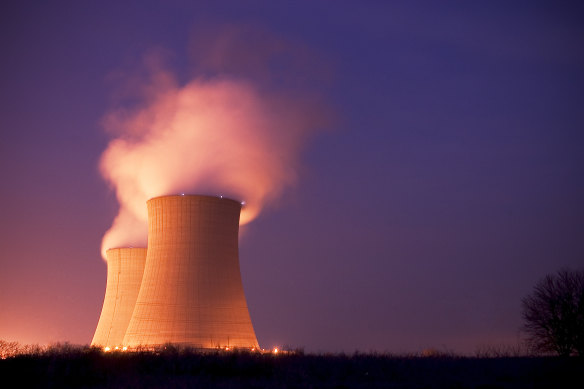This was published 10 months ago
Nuclear not the solution Australia needs, says electricity grid chief
By Nick Toscano
Australia’s energy market operator has dismissed claims that nuclear is the answer to the power grid’s challenges, warning the technology is expensive and cannot be developed in time to replace rapidly retiring coal-fired generators.
Opposition Leader Peter Dutton has revived Australia’s long-running climate wars ahead of the next federal election, mounting attacks against the government’s renewable energy rollout plans and calling for seven nuclear power stations to be built by 2050.

CSIRO said renewables deliver the cheapest electricity and a nuclear plant would cost up to $16 billion to build. Credit: iStock
However, Australian Energy Market Operator (AEMO) chief executive Daniel Westerman cautioned on Tuesday that nuclear was a “comparatively expensive” power source and would take too long to develop in Australia, rendering it an impractical solution to the electricity grid’s most pressing needs.
“Even on the most optimistic outlook, nuclear power won’t be ready in time for the exit of Australia’s coal-fired power stations,” Westerman said. “And the imperative to replace that retiring generation is with us now.”
Australia’s coal-fired power stations, the backbone of the electricity sector for more than half a century, are increasingly bringing forward closure dates as their ageing equipment becomes less reliable and less competitive against cheaper renewables.
At least half of the 14 remaining coal plants on the eastern seaboard are scheduled to shut before 2035.
AEMO, which oversees the interstate power and gas markets, assumes that number could be even higher. Its 25-year road map, released last month following consultations with 2100 stakeholders, found that 90 per cent of the remaining coal capacity was likely to have shut by 2035, and expects the fossil fuel to have exited the grid entirely by 2040.
It determined the best and lowest-cost pathway through energy transition was to build a grid dominated by renewables, firmed up with battery and hydropower storage, and backed up by gas-powered generation.
AEMO’s modelling did not assess the costs of nuclear energy because the power source is banned under federal law.
But Westerman, speaking at the Australian Clean Energy Summit on Tuesday, pointed to research from the CSIRO and AEMO that found nuclear was one of the most expensive forms of electricity.
That report concluded that Australia’s first nuclear plant would cost up to $16 billion, and could not be operational until at least 2040, despite the Coalition promising it would be ready in the 2030s.
“To be clear, AEMO does not form the view that one form of energy is ‘good’ and another ‘bad’,” Westerman said.
“Our engineers and economists are focused on finding the least-cost path to reliable and affordable energy for Australian consumers.”
Opposition energy spokesman Ted O’Brien said the Coalition believed in a “balanced mix of technologies”, including renewables, gas and nuclear energy, to replace coal.
However, he added, AEMO’s assumptions on the pace of coal plant closures were influenced by government targets that “conflict with reality”.
There are concerns that the government’s 82 per cent renewable energy target by 2030 may not be reached due to the lagging rollout of new generation, storage and transmission lines. The lack of projects is also raising worries about the impact of imminent coal closures, leading the Victorian and NSW governments to strike deals prolonging some plants’ operations.
“AEMO’s forecasts of closure of baseload power is due to Labor policy which prioritises ideology over energy security,” O’Brien said.
“Australia can’t afford to prematurely close its 24/7 baseload power stations before a replacement is ready.”
The Market Recap newsletter is a wrap of the day’s trading. Get it each weekday afternoon.